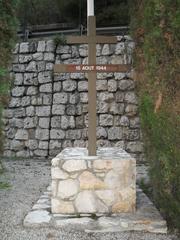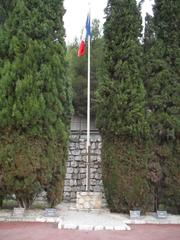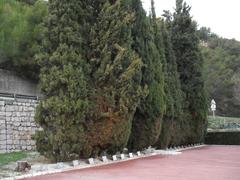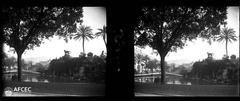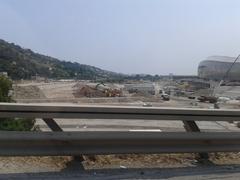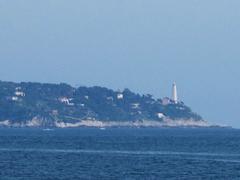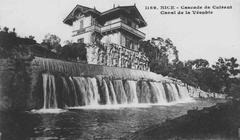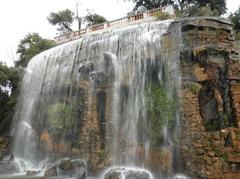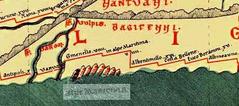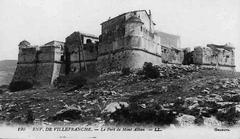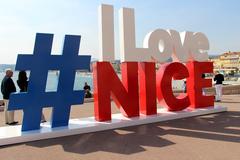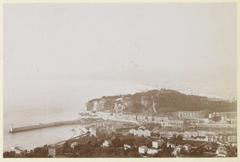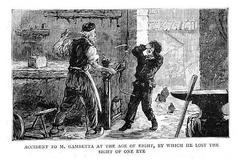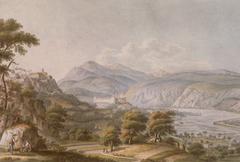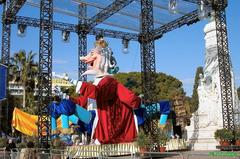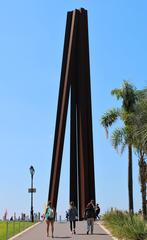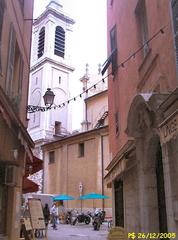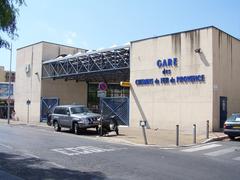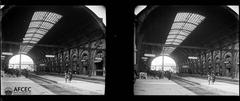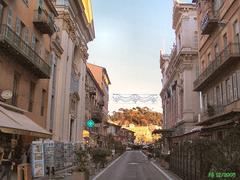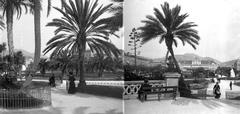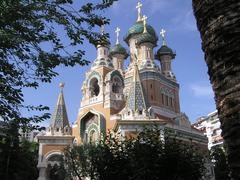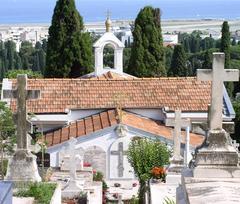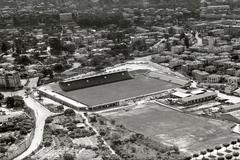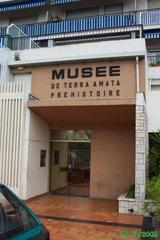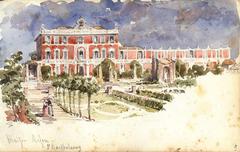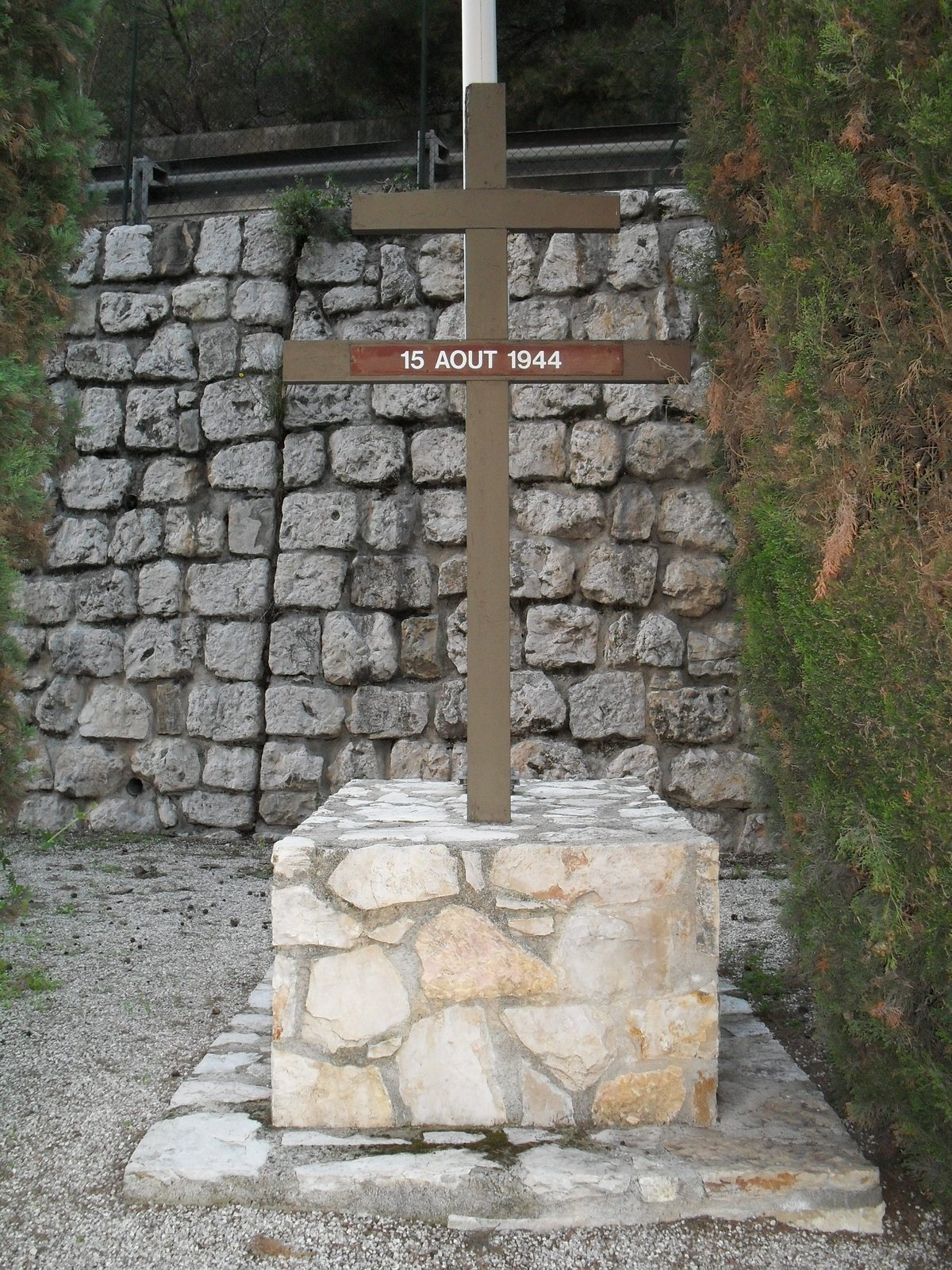
Carré des Fusillés de l’Ariane: Visiting Hours, Tickets, and Historical Significance in Nice, France
Date: 14/06/2025
Introduction
Nestled in the Ariane district of Nice, France, the Carré des Fusillés de l’Ariane is a poignant memorial dedicated to the 21 members of the French Resistance who were executed by Nazi forces on August 15, 1944. This site stands as a powerful symbol of resilience and liberty, commemorating the courage and sacrifice of those who fought for freedom during World War II. Its thoughtful design—including the wooden Croix de Lorraine and 21 cypress trees—provides a tranquil space for reflection while underscoring the profound historical and cultural significance of the location (Nice-Matin, Musée de la Résistance en Ligne).
The Carré des Fusillés is not only a site of mourning but also serves as an educational resource and focal point for community remembrance. Annual commemorative ceremonies on August 15 bring together local officials, descendants, veterans, and youth groups to ensure the legacy of the resistance fighters is passed on to future generations. Its free admission and proximity to other notable historical sites make it a must-see for anyone interested in Nice’s WWII legacy (Ville de Nice, Chemins de Mémoire).
This guide offers a comprehensive overview of the memorial’s history, cultural significance, visitor information, and practical tips to help you engage meaningfully with this important site.
Table of Contents
- Historical Significance of Carré des Fusillés de l’Ariane
- Memorial Layout and Physical Design
- Legacy and Commemoration
- Educational Impact
- Societal and Cultural Significance
- Practical Visitor Information
- Visitor Conduct and Etiquette
- Safety and Security
- Cultural and Historical Context
- Recommendations for a Meaningful Visit
- Frequently Asked Questions (FAQ)
- Call to Action and Additional Resources
1. Historical Significance
The Carré des Fusillés de l’Ariane commemorates the execution of 21 French Resistance members by Nazi forces on August 15, 1944. In the final months before the liberation of Nice, the Ariane district became a focal point for resistance activity. The executions were part of a wave of reprisals across occupied France as the Allies advanced (Chemins de Mémoire). The memorial thus stands as a stark reminder of the human cost of occupation and the enduring spirit of those who resisted.
2. Memorial Layout and Physical Design
Located along the Paillon river valley, the memorial occupies a terraced gravel area accessible via the Chemin des Fusillés (Wikipedia). The centerpiece is a wooden Croix de Lorraine, the emblem of Free France, inscribed with the date “15 août 1944.” Flanking the cross are 21 cypress trees, each representing a fallen resistance fighter, and marble plaques bearing their names (Nice-Matin, Musée de la Résistance en Ligne).
3. Legacy and Commemoration
Annual Ceremonies and Community Engagement
Each year around August 15, local officials, descendants, veterans, and the public gather for commemorative ceremonies. These include wreath-laying, moments of silence, and readings of the executed’s names, reinforcing the transmission of memory and values of liberty and resistance (Ville de Nice).
Influence on Local Identity
The memorial is integral to the Ariane district’s identity, symbolizing the neighborhood’s contributions to the resistance and serving as a focal point for community gatherings (France 3 Régions).
Preservation and Restoration Efforts
The city of Nice, together with veterans’ organizations, maintains the site with renovations, landscaping, and informative panels to ensure its dignity and accessibility (Ville de Nice).
4. Educational Impact
Integration into School Curricula
Local schools regularly organize visits to the memorial as part of history and civic education, using guided tours and workshops to contextualize the events of 1944 (Académie de Nice).
Partnerships with Historical Associations
Associations such as the ANACR (Association Nationale des Anciens Combattants et Amis de la Résistance) enhance educational visits with lectures and survivor testimonies (ANACR).
Digital Resources and Accessibility
Online resources, including virtual tours and historical documents, are available to make the memorial’s history accessible to a wider audience (Ville de Nice).
Contribution to National Memory
As part of France’s network of “lieux de mémoire,” the Carré des Fusillés plays a key role in national remembrance projects (Chemins de Mémoire).
5. Societal and Cultural Significance
Promoting Civic Values
The memorial serves as a catalyst for promoting democracy, solidarity, and resistance to oppression (France 3 Régions).
Fostering Intercultural Dialogue
Commemorative events foster intercultural dialogue in the Ariane district, uniting a diverse community around shared values.
Artistic and Literary Representations
The site has inspired public art, literature, and media, helping to keep the memory of the resistance alive (Ville de Nice).
6. Practical Visitor Information
Visiting Hours and Admission
The memorial is open daily from approximately 8:00 AM to 6:00 PM. Hours may vary during public holidays or special events. There is no entrance fee (Ville de Nice).
Tickets and Booking
No tickets are required. Educational groups should book in advance for guided visits (Académie de Nice).
Accessibility
The memorial is largely wheelchair-accessible, with paved and gravel pathways.
How to Get There
Take tram line 1 to the Ariane stop or use local buses. Parking is limited; public transport is recommended.
Nearby Attractions
Combine your visit with the Musée d’Art Moderne et d’Art Contemporain, Old Town (Vieux Nice), or the Promenade des Anglais for a broader cultural experience.
Visitor Experience and Recommendations
Interpretive panels in French provide historical context. Guided tours are available during certain periods. Visitors are encouraged to approach the site with respect for its solemn purpose.
Visual and Digital Engagement
Virtual tours and digital resources are available via official city websites.
7. Visitor Conduct and Etiquette
- Maintain quiet and respectful behavior.
- Refrain from touching memorial stones and plaques.
- Avoid eating, drinking, or smoking on site.
- Silence mobile devices and supervise children.
- Photography for personal use is permitted, but be discreet, especially during ceremonies.
8. Safety and Security
The Ariane district is generally safe during daylight. Avoid visiting after dark and follow standard urban precautions regarding personal belongings.
9. Cultural and Historical Context
On August 15, 1944, 21 resistance fighters were executed as a reprisal for Allied landings in Provence. The memorial encapsulates the cost of resistance and the enduring spirit of those who fought for liberation (France 3 Régions).
10. Recommendations for a Meaningful Visit
- Research the events of August 15, 1944, and the biographies of those commemorated.
- Combine your visit with other WWII sites in Nice.
- Attend commemorative events, especially on August 15.
- Spend time reflecting on the significance of the memorial and its inscriptions.
11. Frequently Asked Questions (FAQ)
Q: What are the visiting hours?
A: Generally from 8:00 AM to 6:00 PM, year-round.
Q: Is there an entrance fee?
A: No, the memorial is free to the public.
Q: Is the site wheelchair accessible?
A: Yes, with paved pathways.
Q: Are there guided tours?
A: Guided tours are available during official ceremonies or by prior arrangement.
Q: Are there restroom facilities?
A: No, the nearest public amenities are a short walk away.
Q: What else can I visit nearby?
A: The Musée de la Résistance Azuréenne, Old Town (Vieux Nice), and the Promenade des Anglais.
12. Call to Action and Additional Resources
Plan your visit to the Carré des Fusillés de l’Ariane to honor the memory of Nice’s resistance fighters and deepen your understanding of World War II history. For more information and updates on ceremonies, download the Audiala app and follow the Ville de Nice on social media.
References and Further Reading
- Discovering WWII History in Nice: A Guide to History, Monuments, and Tours, 2024, Best of Nice Blog (Best of Nice Blog)
- Exploring the Carré des Fusillés de L’Ariane: Design, History, and Visitor Guide, 2024, Nice-Matin (Nice-Matin)
- Musée de la Résistance en Ligne, 2024 (Musée de la Résistance en Ligne)
- Ville de Nice Official Ceremonies and Information, 2024 (Ville de Nice)
- Chemins de Mémoire - French National Memory Sites, 2024 (Chemins de Mémoire)
- France 3 Régions Coverage on the Ariane Executions, 2024 (France 3 Régions)
- Maitron Fusillés (Maitron Fusillés)
